This essay from 2023 by Automate Construction focuses on the development of 3D Printed Earthen Architecture by Ronald Rael, WASP, and presents a brief history of Earthen Architecture as it relates to this technological development.

Architecture, Art, Design, and Culture using of mud, clay, soil, dirt & dust.
This essay from 2023 by Automate Construction focuses on the development of 3D Printed Earthen Architecture by Ronald Rael, WASP, and presents a brief history of Earthen Architecture as it relates to this technological development.
Emerging Objects explores the frontiers of technology and material using traditional materials (clay, water, and wheat straw), to push the boundaries of sustainable and ecological construction in a two phase project that explores traditional clay craft at the scale of architecture and pottery. The end goal of this endeavor is to demonstrate that low-cost and low-labor construction that is accessible, economical and safe is possible. The project began in the contemporary borderlands along the Rio Grande watershed beginning in El Paso and Juarez and ended near the headwaters of the Rio Grande in Colorado’s San Luis Valley, which was the edge of the historic border between the U.S. and Mexico prior to 1848. The entire region has employed traditional pottery and earthen construction traditions for centuries. More at Mud Frontiers
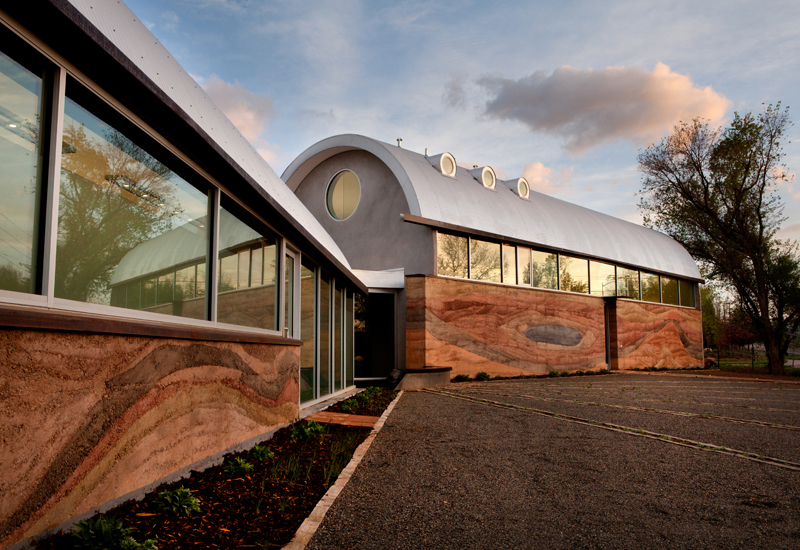
This Earth-inspired project by Tres Birds Workshop is a 7,000 sf private artist’s residency that uses 100% renewable resources, demonstrating fossil-free potential of the built environment. Four vertical geothermal wells were installed to transfer the Earth’s energy to the building’s heating and cooling system. A solar electric roof on the carport generates energy for interior LED lighting and electricity. To test the energy efficiency of the structure, a Home Energy Rating System (HERS) was performed, ranking it in the 74th percentile and exceeding code requirements by three times.
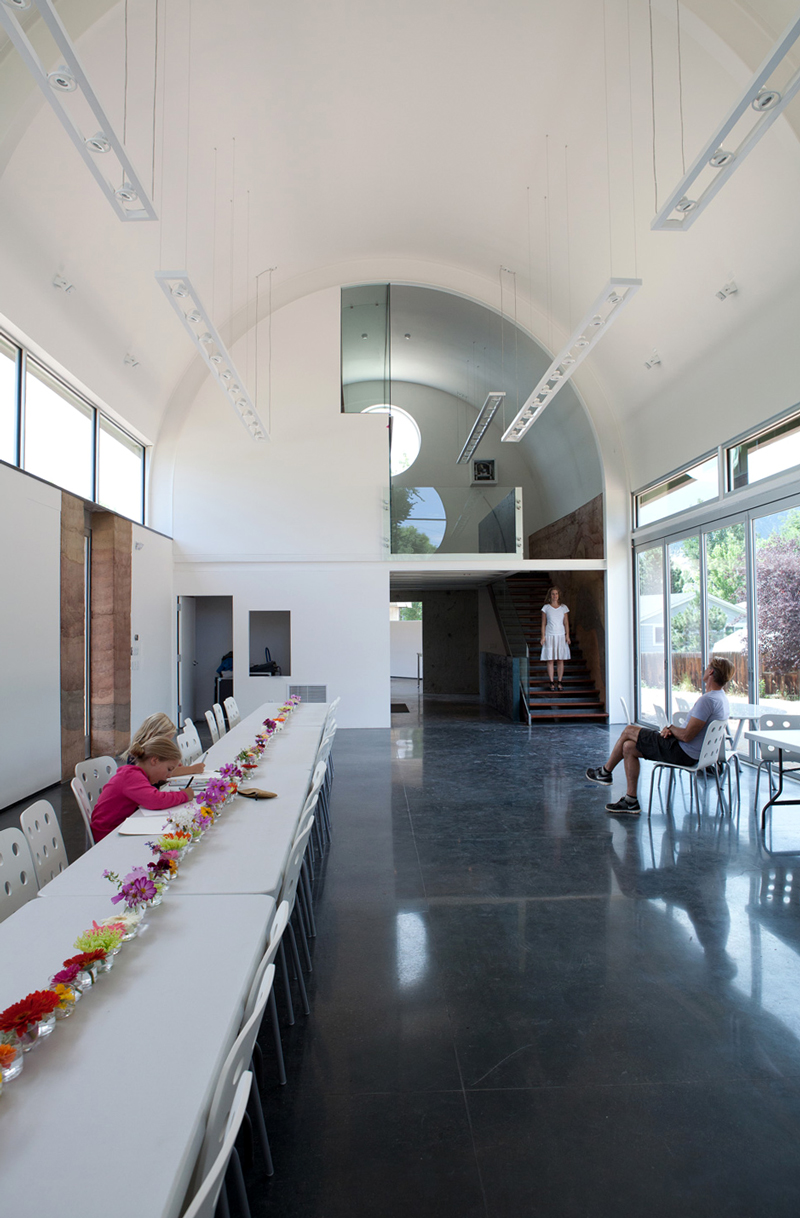
The structure was built using 200 tons of rammed Earth, a composite of regional dirt and pigments, compressed into 30” thick walls. This adds significant thermal mass to the building’s whole, optimal for temperature regulation. Bearing the structural load, these dense walls allow the space to exist free from obstructions, ideal for a simplified interior and exhibiting artwork.
More information at tresbirds.com/SWOON
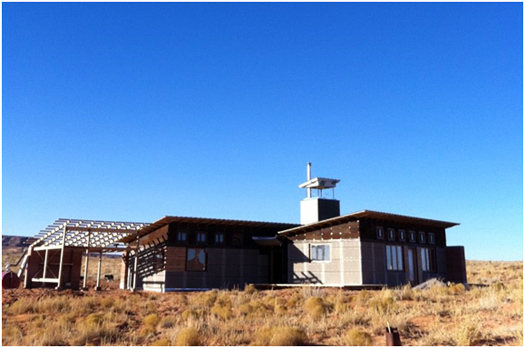
The Begay home is Design Build Bluff’s first project since opening the door to more universities. The students of architecture of the University of Colorado Denver designed a home that responds to a sustainable ethos by using local clay and soils for rammed earth walls and compressed brick for a wind catching chimney which cools the temperature inside during the high summer temperatures. The Windcatcher House, which is totally off-grid and harvests all its water, features an innovative wind tower designed to capture the wind to cool the house.

The Windcatcher House includes local clay for its hand-built compressed brick, as well as the south- and east-facing wall facades. Thermal mass cools the home during the hot, dry summers, and soaks up heat during the very frigid winters. Rainwater is collected from the adjacent carport’s roof and gets reused for the garden.

As with all Navajo Nation homes, this house is nowhere near a power grid, which makes relying on the surrounding earth even more useful and important. The Begays don’t have a car, so they plan to use the carport for an animal barn.
more [ inhabit | university of colorado | green investing ]
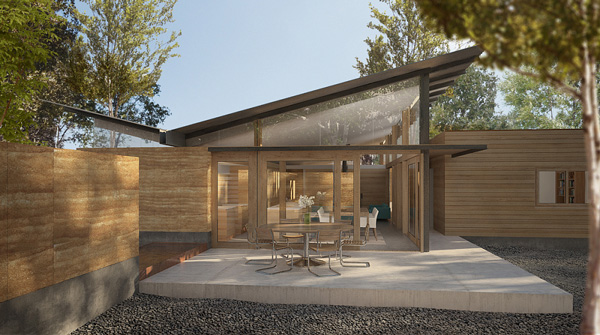
Designed by Pyatt Studio, Casa Sanitas is the first rammed earth house to be constructed in the city of Boulder, Colorado and incorporates an insulated rammed earth enclosure appropriate for the Colorado Front Range climate.
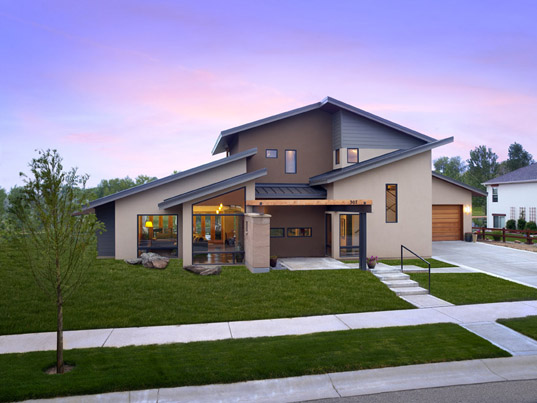
Michael and Lisa Eddy dreamt of living in a home that was designed to showcase their love of nature and appreciation for the environment around them in Colorado. Designed by JCL Architecture, their fantasy home made of rammed earth is characterized by a continuous trellis that greets you at the entry and leads you through the warmth of the house and out into the open backyard towards the landscape beyond. Aside from being beautiful, the house incorporates passive solar strategies and high thermal mass. Proper roof overhangs and southern exposure were calculated to allow maximum solar gain in the winter while minimizing heat gain in the summer. The thermal absorbent qualities of the rammed earth walls and dark stained concrete floors on both levels stabilize temperature swings from night to day and mitigate the need to run an air conditioning unit during the summer. These features are then further supported by a high-efficiency geothermal radiant floor heating system as well as soy-based insulation in the roof and walls.
[ inhabit ]
Front Range Earth Architecture: Why and Why Not?, written by Michael Shernick, is a paper that looks at the history and viability of earth architecture on Colorado’s Front Range. Click here to download the paper in PDF format.
Hallock’s Colorado-based company, Earth Block Inc, has developed an especially efficient and affordable process for earth block production. “Earthen walls have always been the best,” Hallock said during a press tour of the Baja, Mexico facility where he oversees the production of compressed earth blocks (CEBs) for construction at The Villages of Loreto Bay. Compressed earth blocks were chosen for the new resort community because they can be made economically from local materials. CEBs are also energy-efficient and durable. “Bugs don’t eat them and they don’t burn,” Hallock said. The How-To begins here.
The article Down and Dirty from the New York Times, discusses the growing populatiry of earthen floors. (subscription required)
Early one Saturday morning in January, Kevin Rowell dumped a bucket of dark mud on the floor of his big south-facing bedroom. It landed with a plop, spreading out and merging with a blanket of wet earth that already extended across much of the room. On his knees, Mr. Rowell took a trowel to the pile, nudging it this way and that until the mud was roughly level and about an inch and a half deep.
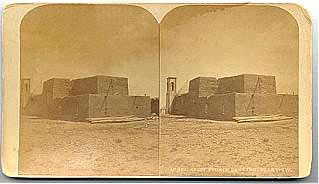
This stereoview photograph from the 1870s is of the historic Catholic church in Conejos, Colorado. The building was constructed between 1860-1863 under the direction of pastor Fr. Jose Vigil. The building replaced an older jacal structure that served as the church from 1858-1860 and was destroyed by fire in 1926.